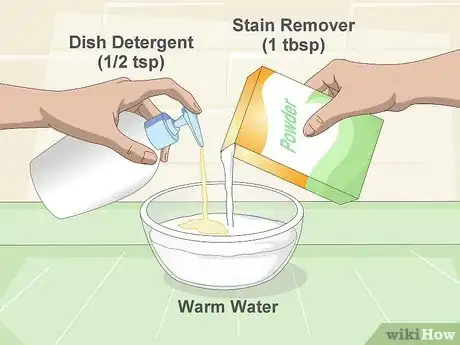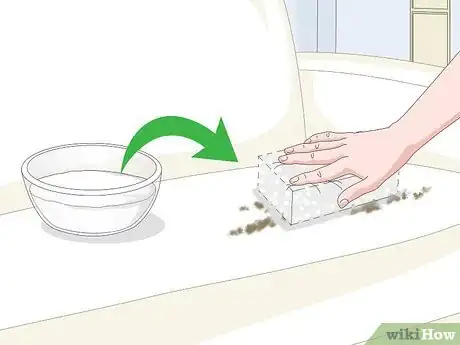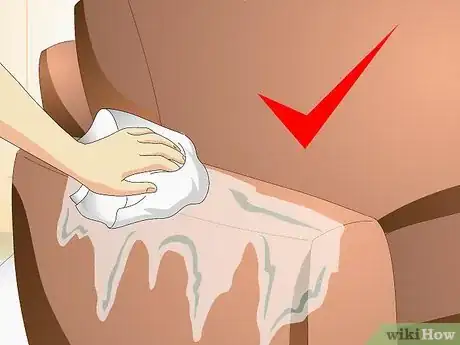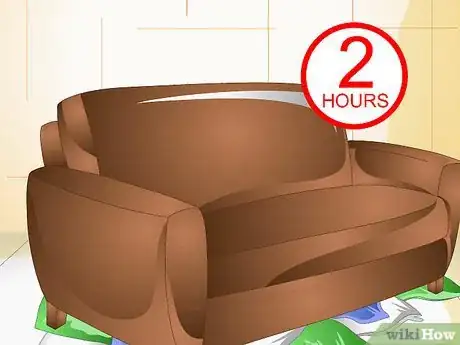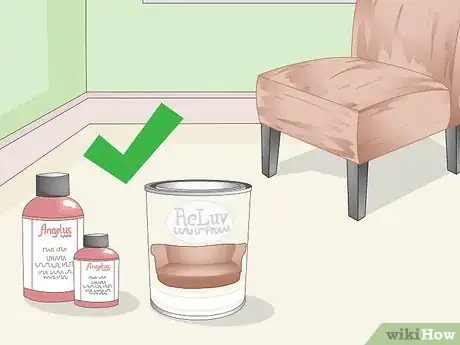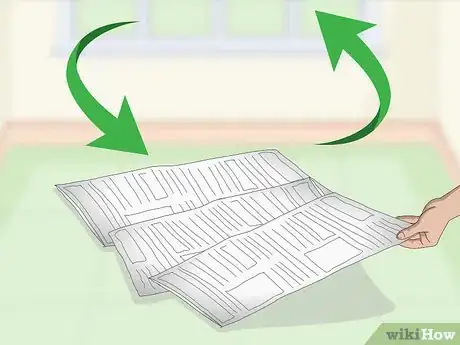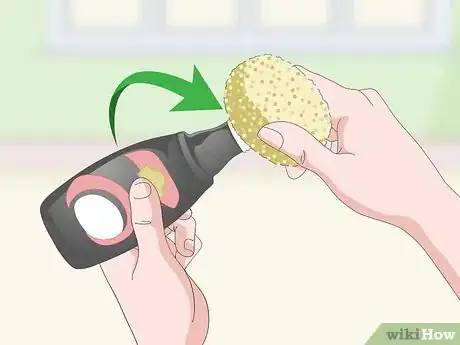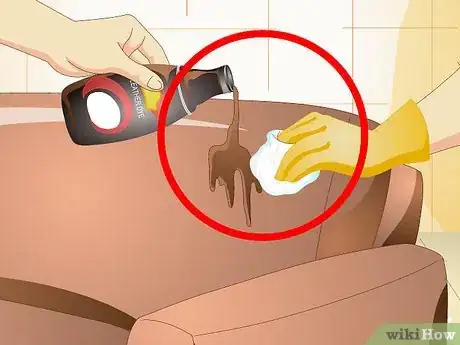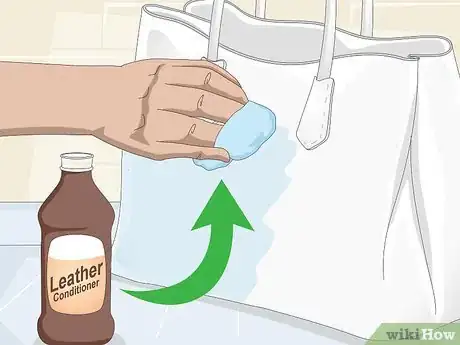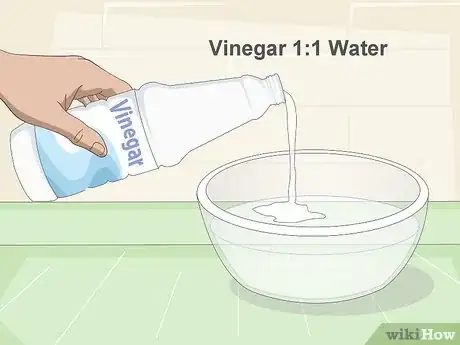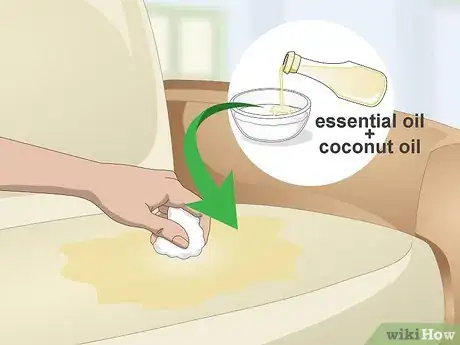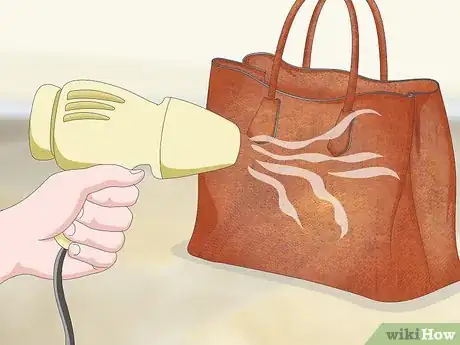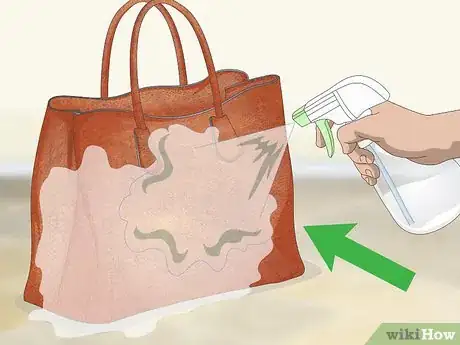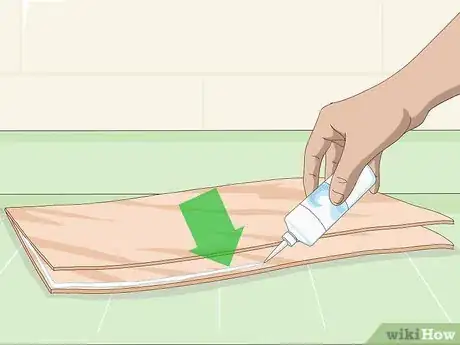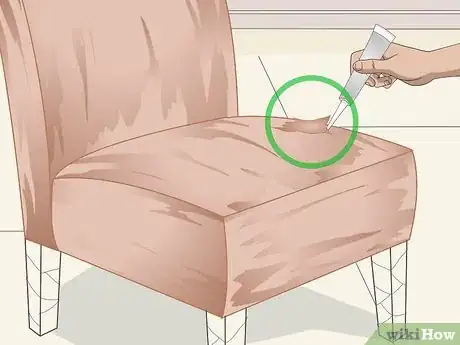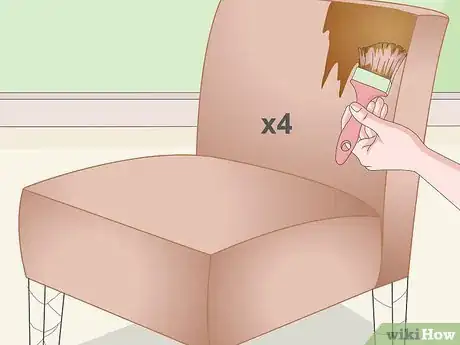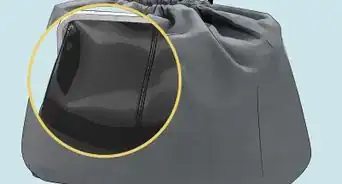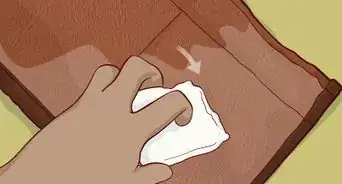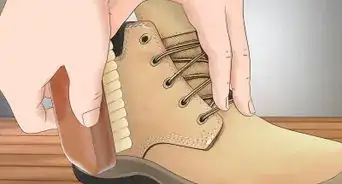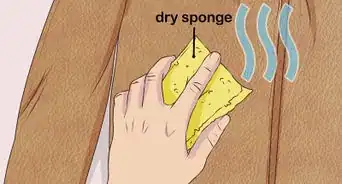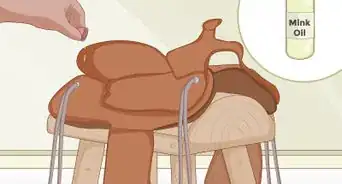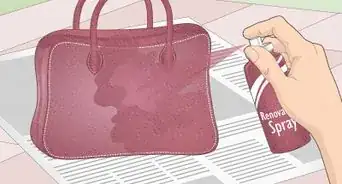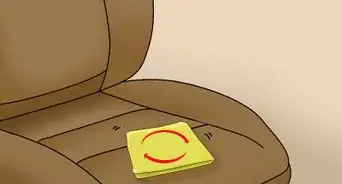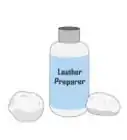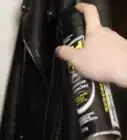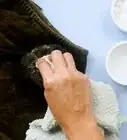This article was co-authored by Mallika Sharma. Mallika Sharma is a Certified Leather Care Technician and the Founder of The Leather Laundry, a niche spa service for luxury leather gear in India. Mallika specializes in leather cleaning, coloring, repairing, and restoring for shoes, handbags, jackets, wallets, belts, and sofas. She holds a Master’s degree in Finance and Investment from the University of Edinburgh Business School. Mallika is a certified Professional Leather Care Technician and trained with the globally reputed leather care company, LTT in the United Kingdom.
There are 14 references cited in this article, which can be found at the bottom of the page.
wikiHow marks an article as reader-approved once it receives enough positive feedback. In this case, 89% of readers who voted found the article helpful, earning it our reader-approved status.
This article has been viewed 399,824 times.
Normal wear and tear typically results in cracks and discoloration in the leather. Leather repair kits, which contain materials and tools for repairing leather, can be purchased to tackle cracked and splitting leather surfaces - this process involves cleaning the leather, applying filler and colorant to it, and treating it with a leather conditioner. Household items like vinegar and oil can be used to repair small scratches on your favorite leather goods, while glue and sub-patches can be used to fix small tears in your leather furniture. While seeking professional help is always an option as a last resort, it is worth attempting a DIY restoration first.
Steps
Preparing the Leather
-
1Get your cleaning materials ready. Cleaning the leather before you condition it ensures you don't lock in any dirt or grime as you moisturize. In a bucket or small basin, mix a cleaning solution of dishwashing soap and warm water (one part soap to 8 parts water).[1] Alternatively, purchase saddle soap from a shoe store, department store, or online. Saddle soap contains ingredients like beeswax that add suppleness to leather while cleaning it, but wax or oil may inhibit a filler or compound from properly adhering to the leather. Use a small amount of the soap (i.e. a small dab on a wet cloth) to prevent buildup on the leather.[2]
- To remove dry dirt and dust, just rub the surface of the leather with a soft, damp cloth.[3]
-
2Lather the surface. Dip a soft, lint-free cloth into the solution, or dip it into warm water before adding a dab of saddle soap. Wring the cloth out lightly, then wipe down the entire damaged surface of the leather with firm, circular motions. Rinse and repeat.[4]
- To remove deep stains on pigmented leather, dilute some rubbing alcohol and rub it into the leather with a lint-free cloth. Just make sure to do a patch test on an inconspicuous area to make sure it doesn't stain the leather.[5]
Advertisement -
3Rinse thoroughly. Rinse the cloth and dip it into cool, clean water. Wring out the cloth lightly and run it over the leather surface again. Make sure to remove all soap from the leather. [6]
-
4Leave the leather to dry. Once the leather is thoroughly rinsed, let it air dry. Avoid using a heater, blow dryer, or other heat source to speed up drying time. Heat can change the chemical structure of leather, leaving it stiff and misshapen.[7]
Fixing the Leather's Surface
-
1Buy a leather repair kit. Leather repair kits are available for purchase at hardware stores, department stores, and online. In theory, these kits should contain all of the tools and substances required to repair leather surfaces. To find a good quality kit, read user testimonials before buying; a reputable company will have many.[8]
- If you just have a small scratch on soft leather, try rubbing the surface of the leather in circular motions with your index finger.[9]
-
2Avoid a mess. To avoid stains from any of the ingredients being used to treat your leather, lay down newspaper, plastic sheeting, or towels under the leather object. Wear protective gloves and old clothing while you work. To minimize fumes from repair products, open the windows or bring the object outside to restore it.
-
3Apply a leather repair compound. Using a sponge, gently spread a thin layer of leather binder (a liquid that seeps into the leather fibres and binds them together) over the entire surface of the worn leather. Let it air dry. Repeat the process 3-5 times, or until you are satisfied with the results. Remove excess binder that might accumulate around the seams.
-
4Apply a thin coat of colorant. Add a small amount of water-based leather colorant to a sponge or foam applicator. Apply a thin coat onto the leather, concentrating on hard to reach areas like creases, cracks, and seams. Wait 30 minutes for the colorant to dry.
- Shake the colorant well to ensure that it is mixed well before using it.
-
5Spray on more colorant. Fill a spray gun or airbrush with colorant. To avoid runs or oversaturation, spray very fines coats of colorant onto the leather. Allow the surface to dry (water-based colorants dry within a few minutes) and repeat the process until the surface looks adequately covered.
-
6Apply a leather conditioner. Once the leather is dry, use a soft, lint-free cloth to apply a leather conditioner to the surface. Be sure to apply the conditioner evenly and cover the entire surface. Gently buff and polish the leather to make it supple and shiny.[10]
Repairing a Small Scratch in Leather
-
1Treat the scratch with vinegar. Apply a small amount of distilled white vinegar to the scratch with a Q-tip or small cloth. The vinegar will swell the scratched area in a collagen-like manner. Let it dry, then gently buff the area with a colorless shoe polish.[11] ]
-
2Rub the scratch with oil. Treat a scratch in leather with either orange oil or olive oil. Using a damp cloth, rub the oil into the scratch and surrounding area using buffing motions. This treatment will have the added bonus of conditioning the leather.[12]
- Use oil sparingly, as it might deteriorate the leather over time if used in excess.[13]
-
3Use a blowdryer. Heat can be bad for leather, but in small doses it may be beneficial. Turn the blowdryer to a medium setting and use it on the section of scratched leather, gently rubbing the scratch with your free hand. The heat should bring dyes applied to the leather at the tannery back to the surface, thereby reducing the appearance of the scratch.[14]
-
4Take care of your leather. Treat your leather goods with a weather-resistant protection spray and reapply every three months. Keep leather away from water as much as possible, and be sure to be delicate about drying it if it does get wet (i.e. avoid direct heat, and air dry). Use a leather conditioner to moisturize leather every few months, or whenever it starts to feel too dry.[15]
Repairing a Cut in Leather Furniture
-
1Insert a subpatch. Cut a subpatch out of thin but solid material (e.g. a piece of an old t-shirt). Cut a patch slightly larger and wider than the tear you are repairing. Round the corners for easier insertion. Use tweezers to insert the subpatch under the tear. Smooth out the subpatch behind the leather; be careful not to do further damage to the leather.[16]
-
2Glue the tear. Apply a flexible craft glue to a large needle, palette knife, or plastic knife. Apply craft glue to the underside of the leather and the subpatch underneath. Do this all around until the tear is glued shut. Flatten the surface of the repair and wipe off excess glue with a wet cloth. Stronger adhesives may have to be cleaned up with rubbing alcohol.
-
3Apply filler. Apply leather filler to the tear in a small thin layer. Some fillers can be force dried with a heat gun or blow dryer. Others must be allowed to cure on their own. Repeat the process until the surface is level. Do a final thin coat and emboss or texturize the compound with a gloved hand or saran wrap. Allow to cure. If necessary, gently polish any rough spots with 500 grit wet or dry sandpaper. [17]
-
4Apply a thin coat of leather dye. Begin with the repaired area. Dab or stipple a thin layer of dye with a sponge, brush or foam applicator. Allow to dry. Work surrounding areas as needed. [18]
Expert Q&A
Did you know you can get expert answers for this article?
Unlock expert answers by supporting wikiHow
-
QuestionHow do you clean dust off of suede shoes?
 Mallika SharmaMallika Sharma is a Certified Leather Care Technician and the Founder of The Leather Laundry, a niche spa service for luxury leather gear in India. Mallika specializes in leather cleaning, coloring, repairing, and restoring for shoes, handbags, jackets, wallets, belts, and sofas. She holds a Master’s degree in Finance and Investment from the University of Edinburgh Business School. Mallika is a certified Professional Leather Care Technician and trained with the globally reputed leather care company, LTT in the United Kingdom.
Mallika SharmaMallika Sharma is a Certified Leather Care Technician and the Founder of The Leather Laundry, a niche spa service for luxury leather gear in India. Mallika specializes in leather cleaning, coloring, repairing, and restoring for shoes, handbags, jackets, wallets, belts, and sofas. She holds a Master’s degree in Finance and Investment from the University of Edinburgh Business School. Mallika is a certified Professional Leather Care Technician and trained with the globally reputed leather care company, LTT in the United Kingdom.
Certified Leather Care Technician
-
QuestionHow do you get a claw mark out of leather?
 Mallika SharmaMallika Sharma is a Certified Leather Care Technician and the Founder of The Leather Laundry, a niche spa service for luxury leather gear in India. Mallika specializes in leather cleaning, coloring, repairing, and restoring for shoes, handbags, jackets, wallets, belts, and sofas. She holds a Master’s degree in Finance and Investment from the University of Edinburgh Business School. Mallika is a certified Professional Leather Care Technician and trained with the globally reputed leather care company, LTT in the United Kingdom.
Mallika SharmaMallika Sharma is a Certified Leather Care Technician and the Founder of The Leather Laundry, a niche spa service for luxury leather gear in India. Mallika specializes in leather cleaning, coloring, repairing, and restoring for shoes, handbags, jackets, wallets, belts, and sofas. She holds a Master’s degree in Finance and Investment from the University of Edinburgh Business School. Mallika is a certified Professional Leather Care Technician and trained with the globally reputed leather care company, LTT in the United Kingdom.
Certified Leather Care Technician
-
QuestionCan you clean dirt off of Nappa leather?
 Mallika SharmaMallika Sharma is a Certified Leather Care Technician and the Founder of The Leather Laundry, a niche spa service for luxury leather gear in India. Mallika specializes in leather cleaning, coloring, repairing, and restoring for shoes, handbags, jackets, wallets, belts, and sofas. She holds a Master’s degree in Finance and Investment from the University of Edinburgh Business School. Mallika is a certified Professional Leather Care Technician and trained with the globally reputed leather care company, LTT in the United Kingdom.
Mallika SharmaMallika Sharma is a Certified Leather Care Technician and the Founder of The Leather Laundry, a niche spa service for luxury leather gear in India. Mallika specializes in leather cleaning, coloring, repairing, and restoring for shoes, handbags, jackets, wallets, belts, and sofas. She holds a Master’s degree in Finance and Investment from the University of Edinburgh Business School. Mallika is a certified Professional Leather Care Technician and trained with the globally reputed leather care company, LTT in the United Kingdom.
Certified Leather Care Technician You can remove dry dirt and dust from Nappa or pigmented leather by rubbing the surface with a soft, damp muslin cloth. For deeper stains, make a solution of lukewarm water and any mild soap (like baby soap). Dampen a soft cloth with the solution and rub it gently across the surface. Wipe it dry with a dry cloth and repeat the process.
You can remove dry dirt and dust from Nappa or pigmented leather by rubbing the surface with a soft, damp muslin cloth. For deeper stains, make a solution of lukewarm water and any mild soap (like baby soap). Dampen a soft cloth with the solution and rub it gently across the surface. Wipe it dry with a dry cloth and repeat the process.
Things You'll Need
- Vinegar
- Orange oil or olive oil
- A hairdryer
- Craft glue
- A small paintbrush
- A small spatula
- A fabric sub-patch
- Saddle soap or dish soap solution
- Lint-free cloths
- Fine sandpaper
- Palette knife
- Leather binder
- Leather filler
- Leather colorant
- Airbrush or spray gun
- Leather conditioner
- Leather protection cream
References
- ↑ https://www.cleanipedia.com/gb/materials-surfaces/the-best-leather-cleaning-methods
- ↑ https://www.motherearthnews.com/homesteading-and-livestock/homemade-saddle-soap
- ↑ Mallika Sharma. Certified Leather Care Technician. Expert Interview. 14 December 2020.
- ↑ https://www.motherearthnews.com/homesteading-and-livestock/homemade-saddle-soap
- ↑ Mallika Sharma. Certified Leather Care Technician. Expert Interview. 14 December 2020.
- ↑ https://www.cleanipedia.com/gb/materials-surfaces/the-best-leather-cleaning-methods
- ↑ http://www.carryology.com/insights/reflections/5-tips-for-leather-care/
- ↑ https://leathermagic.com/do-repair-kits-work/#1443455095607-ead058c6-7dbc
- ↑ Mallika Sharma. Certified Leather Care Technician. Expert Interview. 14 December 2020.
- ↑ http://www.ebay.com/gds/How-to-Restore-Leather-/10000000177771241/g.html
- ↑ http://www.realsimple.com/beauty-fashion/shoes-accessories/diy-accessory-repairs/quick-fix-scratched-leather
- ↑ https://www.doityourself.com/stry/4-tips-for-leather-seat-repair
- ↑ http://lifehacker.com/5948625/stop-diy-cleaning-your-leather-with-oil
- ↑ http://www.fibrenew.com/blog/diy-tips-how-to-fix-scratches-in-leather/
- ↑ http://www.goodhousekeeping.com/home/cleaning/a36614/how-to-care-for-your-leather-clothing/
- ↑ https://www.rubnrestore.com/content/vinyl-leather-compound-instructions.pdf
- ↑ https://www.rubnrestore.com/leather-repair/#vinyl-repair
- ↑ https://www.rubnrestore.com/instructional-videos/#vinyl-color-change
About This Article
If you want to restore the color or condition of leather, you'll need to purchase a leather repair kit online or from a hardware store. Look at reviews to ensure that you find a good kit. Lay down some newspapers to avoid making a mess and then use a sponge to apply the leather repair compound from the kit. Let the compound air dry until it is completely dry and then apply a small amount of water-based leather colorant to the damaged area. This should dry in about 30 minutes. To learn how to repair small cracks in leather using coconut oil, read on!
